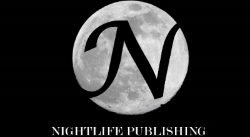According to Robert
McKee’s excellent book on screenwriting, you can’t write in a particular genre
until you understand the conventions and elements that it demands. This is one
of the reasons that writers who strive to improve their craft benefit from reading
the work of others who have mastered a specific genre.
In developing the script for my own novel, I also created my
own understanding of the elements of the spy fiction genre. I’d like to share
this concept here (along with pertinent examples where I can find them) in the
hopes that it will help increase your appreciation of both the spy fiction specifically
and the creation of genre fiction in general.
The Elements of Spy Fiction
Based on my
exposure to classic and modern spy fiction, there are three fundamental elements that can be described simply as the
secret struggle for the magic it. I’ll break down these concepts to make
them more understandable:
- The “Magic It”: There is a person, object or piece of information that drives the story. Whatever this “it” happens to be, it is so important that people are willing to kill and risk their lives for it. For example, in Skyfall the “magic it” starts off as a list of undercover agents (information). In Spy Game, the “magic it” is the spy held in the Chinese prison that is scheduled to be executed (person). In The Hunt for Red October, the “magic it” is a rouge nuclear submarine (very large object).
- The Opposing Groups: There are at least two people, agencies, or countries struggling to acquire whatever the “magic it” happens to be. For example, in Tinker, Taylor, Soldier, Spy the opposing groups are the British Circus and Moscow Center. In La Femme Nikita the opposing groups are Covert One and Red Cell, while The Bourne Identity pits rival factions within the CIA itself as the opposing groups.
- The Secret Struggle: For reasons that are inherently logical to the story, the opposing groups need to keep their conflict hidden from the outside world. This is what separates spy fiction from most mysteries, thrillers and legal or police suspense novels. Both the protagonist and the antagonist work from the shadows, employing similar techniques of stealth and deception. In many spy classics, it is often difficult to tell who the “good” and “bad” guys are based purely on what they do. This gray area is one of the elements that make stories like The Gentleman’s Game, Rain Fall and Ronin so compelling. The definitions of right and wrong often boil down to malleable issues of money, ideology, coercion and excitement.
Applying
the Elements to My Own Work
The premise of the book I am writing now
involves a young spy who is forced to infiltrate an international smuggling
ring by seducing the leader of the group. The “Magic It” here is
information. The protagonist has to find proof that her lover is tied to arms
smuggling. There are two opposing groups; the mercenary spies sent to infiltrate
the smugglers and the smugglers themselves. Both groups need to use secrecy and
deception, either to illegally ship weapons around the world or get into a
position to stop those shipments. By
creating a story that satisfies the elements of spy fiction, I can build a
stronger narrative that can hopefully appeal to the millions of people who
devour this genre every year in books, TV shows and movies.
The
Dark Side
While
understanding the conventions of any fictional genre can satisfy the
expectations of the audience, writers must, at the same time, be very aware of
the clichés that are particular to their genre. Avoiding these pitfalls is the
difference between creating a classic story and a half-baked mess. Next week, I’ll
try to define what the differences are between conventions and clichés and
explain how my novel will try to rise above the ordinary.
So what are the elements of your favorite fictional genre? How do your favorite books capture or transcend the conventions of the genre and redefine them? Let me know what you think in the comments...
So what are the elements of your favorite fictional genre? How do your favorite books capture or transcend the conventions of the genre and redefine them? Let me know what you think in the comments...
Have
fun.
Gamal

